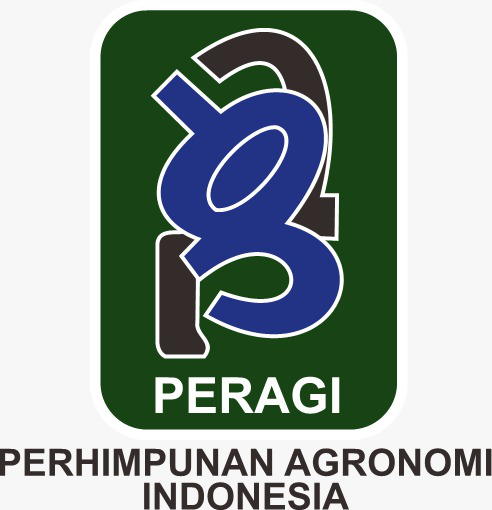Increasing Red Onion Plant (Allium ascalonicum L) Growth and Production by Providing Cascing and NPK 16.16.16. Fertilizer
Abstract
Riau Province relies on other regions, such as North Sumatra, West Sumatra, and Java, for its needs. However, when natural disasters occur, or transportation disruptions happen from the sources of onion production, the price of shallots in the market increases. To reduce Riau companies' dependency on this raw material, it is necessary to develop shallot plants using optimal cultivation techniques to maximize growth and production. This research was conducted at the Experimental Garden of the Faculty of Agriculture, Pasir Pengaraian University, Rokan Hulu Regency, for three months from May 2022 to July 2022. The research utilized a completely randomized factorial design with two factors. The first factor involved the application of Vermicompost Fertilizer, with four treatment levels: 0. 200. 400. and 600 g/plot. The second factor involved the application of NPK 16.16.16 fertilizer with four treatment levels: 0. 10. 20. and 30 g/plot. The parameters observed included plant height, harvest age, number of tubers per cluster, tuber weight per bulb, wet tuber weight per cluster, dry tuber weight, and percentage of tuber weight loss. The research results indicated that the interaction between vermicompost fertilizer and NPK 16.16.16 fertilizer had a significant impact on plant height, harvest age, number of tubers per cluster, number of tubers per tuber, wet tuber weight per cluster, and dry tuber weight per cluster. The best treatment was a combination of Vermicompost 600 g/plot and NPK 16.16.16 30 g/plot. The main effect of the Vermicompost Fertilizer application was significant for all observation parameters, and the main effect of NPK 16.16.16 also had a significant impact on all observation parameters.
Downloads
References
Akhtar, M.E., K. Bashir, M. Z. Khan and K.M. Khokhar. 2002.Effect of potash application on yield of different varieties of onion (Alliumcepa L).Asian J.of Plant Sciencesvol1(4) : 324325
Dirgantari, S, Dkk, (2016). Respon Pertumbuhan dan Hasil Bawang Merah (allium ascolancum L) Terhadap Kombinasi Dosis NPK dan Pupuk Kandang Jurnal Ilmia Mahasiswa Pertanian Unsyiah. 1 (1) : 217-226
Erytrina. 2013. Pembenihan dan Budidaya Bawang Merah. Seminar Nasional InovasiTeknoloi Pertanian Mendukung Ketahanan Pangan Dan Swasembada Beras Berkelanjutan di Sulawesi Utara. Balai Pesar Pengkajian Dan Pengembangan Teknoologi Pertanian. Bogor.
Gunaidi. N. 2009. Kalium sulfat dan kalium klorida sebagai sumber pupuk kalium pada tanaman bawang merah. Bandung. Jurnal Hortikultura. 19 (2): 174-185.
Fahrudin, F., 2009. Budidaya Caisim (Brassica Juncea L.) Menggunakan Ekstrak The dan Pupuk Kascing. Universitas Sebelas Maret, Surakarta.
Hidayat, A & Rosliani, R. 1996. Pengaruh pemupukan N, P dan K pada pertumbuhan dan produksi bawang merah kultivar Sumenep. Jurnal. Hortikultura, volume 5 (5): 39-43
Lingga, P dan Marsono. 2007. Petunjuk Penggunaan Pupuk NPK 16:16:16. PT Penebar Swadaya. Jakarta.
Luh, Kartini. 2015. Pupuk Kascing Kurangi Pencemaran Lingkungan. http://www. Balipost.co.id/ balipostcetak/2005/4/14/b6. Htm (Diakses 2 Juli 2007).
Manahan, Sabam., Idwar, dan Wardiati. 2016. Pengaruh Pupuk NPK dan Kascing Terhadap Pertumbuhan Kelapa Sawit (Elais guineensis Jacq.) Fase Main Nursery. (8) 2.
Manoppo. 2014. Pengaruh Pupuk Kandang Dan Takaran NPK Terhadap Pertumbuhan Dan Hasil Bawang Merah (Allium ascalonicum L). (Skripsi). Fakultas Universitas Lampung.
Mulat, T. 2016. Membuat dan Memanfaatkan Kascing Pupuk Organik Berkualitas. Agro Media Pustaka. Jakarta
Mulyadi. 2007. Pertumbuhan dan Produksi Bawang Merah Dengan Penggunaan Mulsa dan Pemupukan NPK. Jurnal Penelitian Bidang Ilmu Pertanian. 4 (1) :41-48.
Napitupulu, D. dan Winarno. 2009. Pengaruh Pemberian pupuk N dan K Jurnal terhadap pertumbuhan dan produksi Bawang merah. Jurnal Hortikultura, Badan Penelitian dan Pengembangan Pertanian Pusat Penelitian dan Pengembangan Hortikultura Jakarta Indonesia. Agro Vol. III, No. 1. Juli 2016.
Mutia, A.K. (2014). Perubahan Kualitas Bawang Merah (Allium Ascolanicum. L ) Selama Penyimpanan Pada Tingkat Kadar Air dan Suhu yang Berbeda. Jurnal Pasca Panen. 11 (2):108-115
Samad, S. (2008).Respon Pupuk Kandang Sapi dan KCL terhadap Pertumbuhan dan Produksi Bawang Merah (Alium ascalanicum L.), Buletin Penelitian.Lembaga Pene-litian Universitas Hasanuddin.
Sembiring.Natasya., B. Sengli J, Daminik, dan Jonan Ginting. 2013. Tanggapan Pertumbuhan dan Produksi Bawang Merah (Allium ascalonicum L.)Varietas Kuning terhadap Pemberian Kompos Kascing dan Pupuk NPK. (2)1.
Sumarni, N., dan A.Hidayat. 2005. Budidaya Bawang Merah. Balai Penelitian Tanaman Sayuran. Bogor.
Wulandari, W., Idwar, dan Murniati. 2016. Pengaruh pupuk organik dalam mengefisienkan pupuk nitrogen untuk pertumbuhan dan produksi tanaman bawang merah (Allium ascalonicum L.) JOM FAPERTA. 3 (3): 1-13.
Copyright (c) 2024 Khusnu Abdillah Siregar, Saripah Ulpah

This work is licensed under a Creative Commons Attribution 4.0 International License.
Authors who publish with Jurnal Agronomi Tanaman Tropika (JUATIKA) agree to the following terms:
Authors retain copyright and grant the Jurnal Agronomi Tanaman Tropika (JUATIKA) right of first publication with the work simultaneously licensed under a Creative Commons Attribution License (CC BY 4.0) that allows others to share (copy and redistribute the material in any medium or format) and adapt (remix, transform, and build upon the material for any purpose, even commercially) with an acknowledgment of the work's authorship and initial publication in Jurnal Agronomi Tanaman Tropika (JUATIKA).
Authors are able to enter into separate, additional contractual arrangements for the non-exclusive distribution of the journal's published version of the work (e.g., post it to an institutional repository or publish it in a book), with an acknowledgment of its initial publication in Jurnal Agronomi Tanaman Tropika (JUATIKA). Authors are permitted and encouraged to post their work online (e.g., in institutional repositories or on their website) prior to and during the submission process, as it can lead to productive exchanges, as well as earlier and greater citation of published work.







 More Information
More Information



